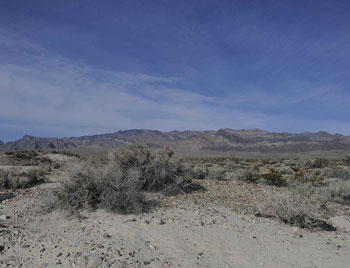Investment Opportunity: Water Conservation

The Challenge
Across the nation, and in fact around the world, water conservation has become increasingly important as populations grow. Water shortages and the cost of replacing aging distribution infrastructure have caused municipalities and utilities to raise rates and impose tiered overuse penalties. Multifamily complex owners have been hit particularly hard by these rate increases and overuse penalties, because they have no way to directly incent their tenants to conserve water.
Because the vast majority of multifamily complexes were built with a master water meter and no single water entry point for each unit, it is impossible to incent the tenants to conserve water because there are no use measurements that would have been provided by submeters for each unit. Further, the cost of retrofitting existing multifamily complexes with individual water meters can run hundreds or thousands of dollars per unit.
Consequently, this simple, effective and economical water conservation system for multifamily complexes will be enthusiastically welcomed into the market. In fact, that view is shared by a list of 20 established dealers of apartment complex ancillary services who have expressed an interest in selling the product to their existing base of customers. Their combined customers’ units number in the high six figures.
The System
The system does not attempt to measure the amount of water used by each apartment, but rather compares the water usage of a particular apartment to all other similar apartments within the complex. Thus, it establishes a ranking of the comparative water use for all similar units.
In the basic system, a device is installed between the toilet tank and the toilet water supply line. This small device doesn’t measure the water flow; rather it records the length of time the water runs every time the toilet is flushed or when the tank is filling due to a leaking or stuck toilet flapper valve.
The device contains a sensor and a transmitter which transmits the fact that the toilet water supply is running to a Unit Node in the apartment unit, which is installed as a backing plate for the thermostat allowing it to draw power from the thermostat lead. The Unit Nodes transmit the data to a Gateway in the complex and this information is then transmitted via the Internet to the database for that particular complex. These point-of-use sensors can also be installed on shower heads and in-unit washing machines and dishwashers to collect additional water use datapoints.
Toilets are the highest water use within an apartment, and by recording toilet tank fill events, three very valuable data sets are established, enabling:
- Quick Identification of Leaky or Stuck Flapper Valves. Through an automated alert process, the system will notify management if a particular toilet has developed a leak or is running continuously, thereby allowing for a quick water saving repair. According to the EPA, a silent, leaking toilet can waste 200 gallons per day. A running toilet can consume 3,000 gallons per day. In fact, according to the American Water Works Association, 12% of indoor water use is from leaking toilet flapper valves.
- Detection of Unauthorized Occupants. By measuring usage against a norm, the system can make the apartment management aware if more people are occupying a unit than is provided for in the rental agreement. Over occupancy by unauthorized tenants leads not only to excess water use but creates many other problems as well. The system is the easiest and cheapest way to spot units with unauthorized occupants.
- Conservation Incentive Billing. The system rates the comparative water usage for each apartment within a particular group of similar apartments. This ranking can be used to create a water saving, incentive billing system. The tenants are notified that because of water rate increases and penalties, the complex will impose a tiered surcharge for all units in the complex based upon relative water usage by each user within each demographically similar group. This ranking system eliminates the inherent unfairness of current Ratio Utility Billing Systems (RUBS) that only rely on unit square footage and number of occupants. With only the toilet sensor installed, the system establishes the comparative time of occupancy of the units so that the one bedroom with two occupants who work and travel pay less than the similar unit where the two occupants are home all day.
By adding shower and washer/dishwasher monitoring, not only are additional comparative water use datapoints gained, but that data can be used by tenants to actually modify their water use behavior in the same proven manner that tenants lower their water use when units are retrofitted with submeters. Complexes with retrofitted submeters can show lower water use by up to 39%. Comparable results are likely to be achieved with a tiered incentive system.
Economics
The economics are quite compelling to the owner, even in the absence of additional smart home services, enabled by the system, which can include security sensors on door and windows, motion sensors, temperature sensors, fire, smoke and carbon monoxide sensors and even medical and panic alert sensors.

Incredibly smart and creative! I can see the potential benefits for everybody involved.
Interesting concept. We all should be promoting conservation of this vital resource.
Are samples of the product available?
I’m sure the answer is yes; please see my email.